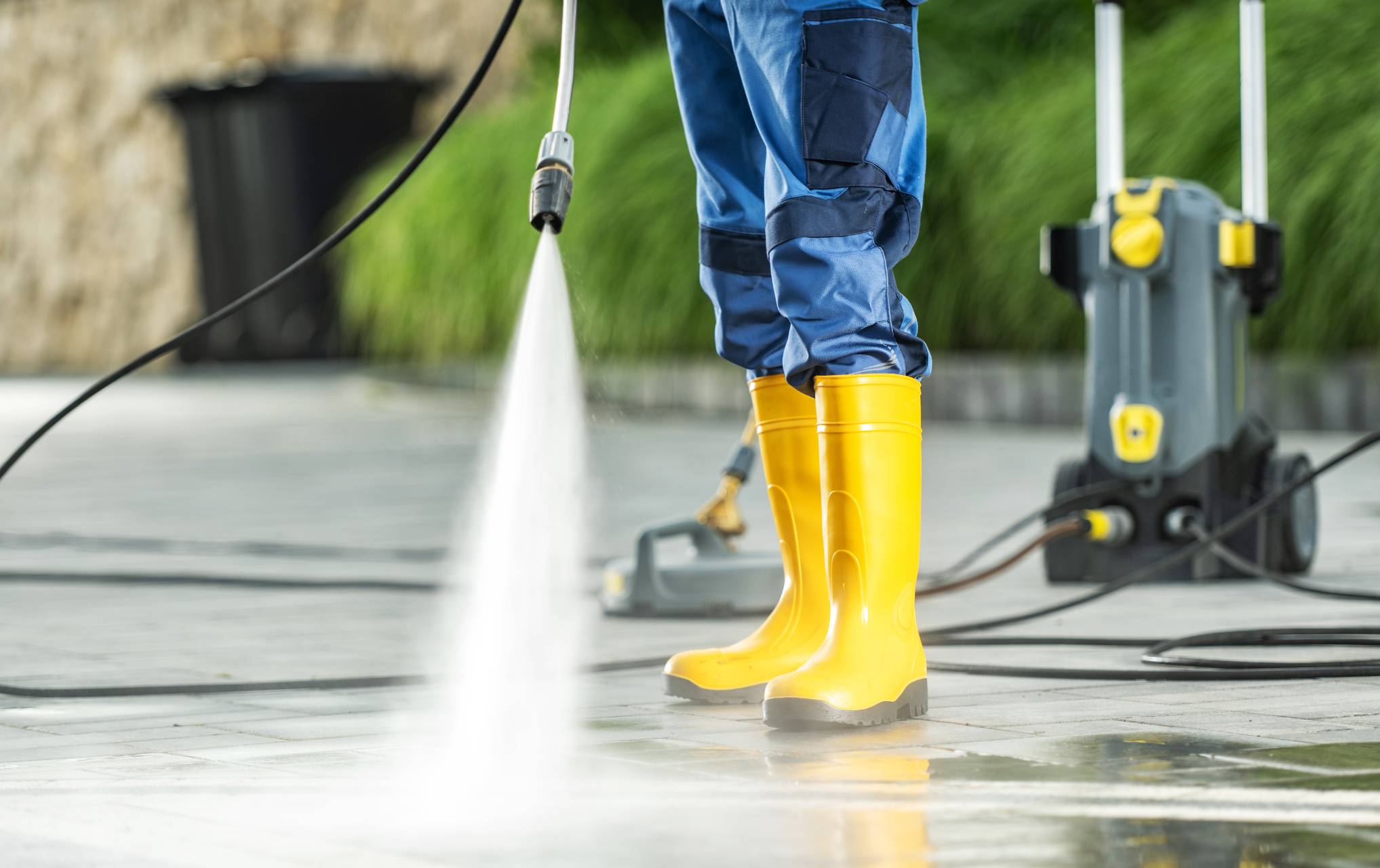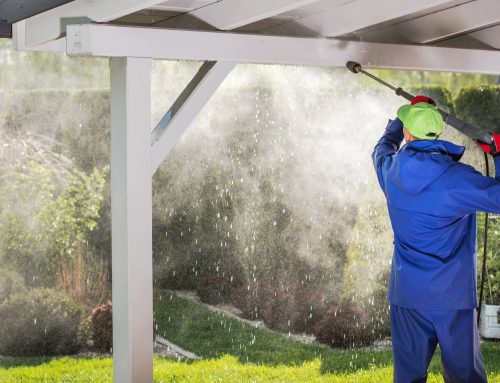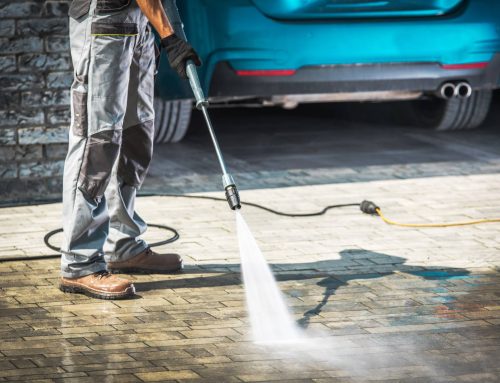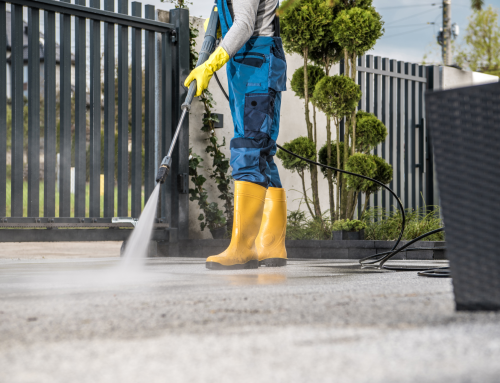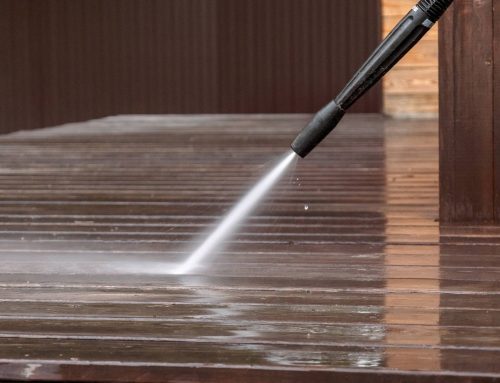If your home’s exterior surfaces are due for cleaning, power washing can be an excellent option to complete the task. Power washing is a cleaning method that uses a high-pressure mechanical sprayer to remove dirt, grime, dust, mold, and other contaminants from surfaces. It is an effective and efficient way to clean and restore various surfaces, particularly those that have accumulated tough-to-remove stains and debris. Power washing is a common cleaning method for exterior surfaces of sidewalks, driveways, homes, and buildings. It is an efficient way to remove algae, mold, and mildew from siding, roofs, and decks as well as to prepare outdoor surfaces for painting or refinishing. Power washing can also be used for cleaning outdoor furniture and equipment and for washing vehicles, such as cars, trucks, and boats.
When it comes to power washing, both equipment and technique are important aspects of the task. This cleaning method involves the application of fluid dynamics, pressure, and energy transfer to remove tough stains and debris from surfaces. Here is a breakdown of how power washing removes dirt and grime:
High-Pressure Water
The key component of power washing is the high-pressure water stream produced by the power washer. Power washing equipment uses a motor or engine to pressurize water, forcing is through a narrow nozzle at a high velocity. This pressure is responsible for generating the force needed to clean surfaces effectively.
The high-pressure water can penetrate and reach into crevices, cracks, and hard-to-reach areas that might be difficult to clean with traditional methods. The thorough penetration of high-pressure water ensures that dirt and grime are removed from all areas, even hidden spaces. In addition, the turbulent flow of the high-pressure water creates swirls and eddies, which help lift and suspend dirt and debris and prevent contaminants from resettling on the surface.
Mechanical Force
When water is pressurized and is forced through a narrow nozzle, it gains kinetic energy. As a result, the power washer creates a forceful jet of water that can dislodge and break apart dirt and grime from surfaces. The high-pressure stream of water exerts a strong mechanical force on the surface being cleaned. As the high-pressure water stream transfers its kinetic energy to the particles on the surface, the mechanical force of the high-pressure water stream weakens the adhesion of the contaminants to the surface. This agitates and lifts dirt and debris from the surface. The mechanical force of the high-pressure water physically pushes, pulls, and lifts the contaminants away, making it easier to remove them. The mechanical force acts like a powerful scrub that can break down and loosen materials, removing even stubborn or ingrained stains. Since the power washing equipment can control the water pressure and flow, all areas of the surface receive an equal amount of mechanical force for thorough cleaning. This results in a consistent and evenly cleaned surface.
High Flow Rate and Volume
In addition to high pressure, power washers deliver a significant volume of water. The combination of high pressure and high flow rate helps ensure that the loosened dirt and grime are quickly removed and rapidly flushed away from the surface. The high water volume creates a strong flow that prevents the dislodged dirt and debris from resettling on the cleaned surface. Instead of allowing contaminants to accumulate again, this high flow rate carries the dirt and contaminants away from the area being cleaned. With the high water volume, the power washer can cover larger surface areas efficiently. It can ensure that all areas of the surface receive a thorough and consistent cleaning and prevent streaking or uneven cleaning. Furthermore, the high water volume reduces the need for manual scrubbing or additional physical effort, which makes power washing faster and more efficient than traditional cleaning methods. The high water volume used in power washing complements the mechanical force of the high-pressure water stream to provide efficient, thorough, and rapid cleaning of surfaces.
Nozzles and Tips
Power washers come with different nozzles and adjustable spray tips that can be used to modify the spray pattern and pressure. The different nozzles and tips allow power washer operators to control the pressure of the water stream. Depending on the nozzle used, power washer operators can increase or decrease the pressure of the water. Controlling the pressure of the water is essential for preventing damage to delicate surfaces and for maximizing cleaning power on tougher stains. The ability to switch between different nozzles and tips means that a single power washer can be used for a wide range of cleaning applications. For example, a narrow nozzle with high pressure is effective for targeting specific stains or areas that require intense cleaning. On the other hand, a wider spray pattern with lower pressure is suitable for rinsing away lighter dirt and debris. The variety of nozzles and tips allow for precise and controlled cleaning, ensuring that the power washer user can direct the water stream exactly where it is needed. Using the appropriate nozzle for the cleaning task allows the power washer user to reduce the risk of injury and to avoid damage to sensitive areas or adjacent surfaces.
Detergents and Cleaners
In some cases, power washing is used in combination with detergents and cleaners. Detergents and cleaners are formulated to break down and emulsify specific types of stains and contaminants, such as grease, oil, mildew, and mold. Detergents and cleaners can help loosen the dirt and grime that may have been deeply embedded or heavily adhered to the surface being cleaned. Often formulated with surfactants that help suspend and encapsulate dirt and contaminants, detergents and cleaners prevent dirt and contaminants from resettling on the surface being cleaned. Detergents and cleaners can provide an additional chemical action that complements the mechanical force and water volume of the high-pressure water, leading to more effective cleaning results and potential time savings while cleaning.
Detergents and cleaners come in various formulations for specific cleaning tasks. Power washer operators can use the right detergent for the type of stain or surface they are trying to clean. For example, some detergents are designed to be gentle on surfaces and can help protect surfaces from potential damage that may result from the high-pressure water alone. However, it is important to use the appropriate detergent or cleaner for the specific cleaning task, as using the wrong type of detergent may not produce the desired results or potentially harm the surface being cleaned. When used correctly, detergents and cleaners can boost the cleaning effects of power washing.
In summary, power washing works by utilizing high-pressure water to dislodge and remove dirt from various surfaces. Power washing relies on the principles of fluid dynamics, pressure, energy transfer, and mechanical force to achieve thorough and effective cleaning results. As such, proper technique and the use of appropriate pressure settings, nozzles, and detergents are essential to ensure safe and effective power washing.
Seeking the services of professional power washers can help ensure that the appropriate equipment and correct techniques are used to clean your home’s exterior surfaces. Professional power washers are trained to operate the equipment safely, reducing the risk of accidents. They possess the skills to perform the cleaning tasks correctly and efficiently. Professional power washers are also aware of environmental regulations and best practices for managing and disposing of wastewater and cleaning solutions, which is important for preventing pollution and protecting the environment. By working with professional power washers, you can ensure consistent and high-quality cleaning results, avoid damages to exterior surfaces, and ensure that the surfaces are cleaned efficiently.

